The Allure of Blackened Teeth: A Traditional Japanese Sign of Beauty
Ohaguro (which may be translated as ‘blackened teeth’) is a practice in which people (usually women) dye their teeth black. While this custom is known to be practiced in different parts of the world, including Southeast Asia, the Pacific Islands, and even South America, it is most commonly associated with Japan.
It is undeniable that traits deemed attractive and beautiful are often dictated by a society, and until the end of the 19th century black teeth was regarded as a sign of beauty in Japan. Nevertheless, blackened teeth were more than just a mark of beauty in Japanese society, the practice of blackening teeth served other purposes as well.

A woman with teeth stained black by the practice of Ohaguro. (peterbrown-palaeoanthropology.net)
Black Teeth Dye Preparation
The traditional method for obtaining black teeth through the practice of Ohaguro involves the ingestion of a dye in a drink called Kanemizu. To create the dye, iron fillings are first soaked in tea or sake with vinegar. When the iron oxidizes, the liquid would turn black. The taste of the dye is said to be harsh, hence spices such as cinnamon, cloves and anise, would be added to it. This dye would be drunk, causing the drinker’s teeth to turn black.
In order to keep the teeth black, the process would be repeated once a day or once every few days. The results seem to have been permanent, as there are skeletons from the Edo period whose teeth are still black due to the practice of Ohaguro.
- The Frightening Discovery of the Mount Owen Claw
- This is What a Man from the Tomb of Sunken Skulls Looked Like
- The Controversial Lapedo Child – A Neanderthal / Human Hybrid?

Young Tonkin with teeth painted black, c. 1905. (Public Domain)
Reasons for Ohaguro
It is unknown when and how the practice of Ohaguro began. Nevertheless, it became popular at some point of time during the Heian period (8th – 12th centuries AD). During this period, it was the aristocrats, especially its female members, who practiced dying their teeth black. This practice caught on because it complemented another symbol of beauty during that period…
Apart from black teeth, white faces were another desirable trait during the Heian period. Unfortunately, the white makeup, which was made of rice powder, could potentially cause a person’s teeth to look yellower than they actually were. In order to overcome this problem, women painted their teeth a contrasting, eye catching black. When a person’s teeth are shown, an illusion is created in which a wide smile is presented without showing one’s teeth.
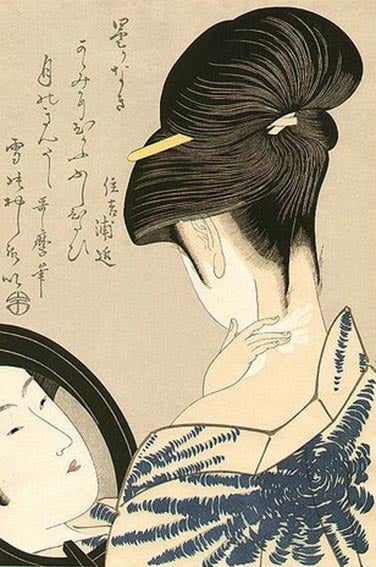
A woman painting her face and neck white. (Ukiyo-e)
Along with being a statement of beauty, the practice of Ohaguro is said to have strengthened the teeth and protected a person from dental problems such as cavities and gum disease. Furthermore, the samurai practiced Ohaguro to demonstrate their loyalty towards their masters.
Black Teeth in Fashion
Ohaguro continued to be practiced during subsequent periods of Japanese history. By the time of the Edo period (17th – 19th centuries AD), this practice had spread from the aristocratic class to other social classes as well.
During this period, Ohaguro was commonly practiced among married women, unmarried women over 18 years old, prostitutes, and geishas. Thus, black teeth signified a woman’s sexual maturity. This could have been a continuation of the former Muromachi period practice in which daughters of military commanders began painting their teeth black to show their coming of age – when they were 8-10 years old!
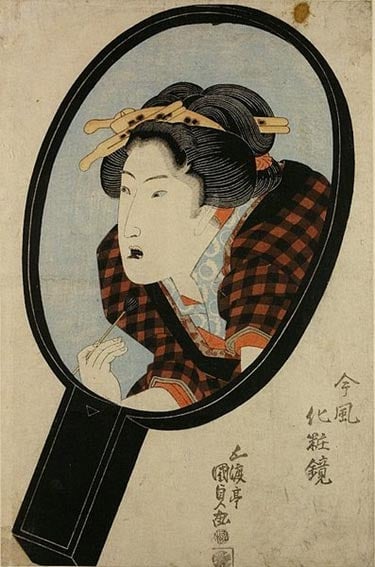
Blackened teeth, Nishiki-e of Utagawa Kunisad, from the series Mirrors of modern apartments, c. 1820. (Public Domain)
During the Meiji period which succeeded the Edo period, the practice of Ohaguro fell out of fashion. As part of the new Japanese government’s attempts to modernize the country, Ohaguro was banned in 1870.
- Taiwan Jaw Bone Connected to the Origins of Humanity, May Reveal Entirely New Prehistoric Species
- Archaeologists discover 2,300-year-old dental implant in Iron Age burial chamber
- Ancient teeth reveal evidence of 400,000 year-old manmade pollution in Israel
The new trend in Japan, with regards to teeth, was to keep them white. This new fashion was ‘endorsed’ in 1873 when the Empress of Japan herself appeared in public with a dazzling set of white teeth.
Soon, white teeth were regarded as a mark of beauty, and Ohaguro slowly lost its appeal among the Japanese. Ohaguro eventually died out among the general public in Japan, however it can still sometimes be seen in the Geisha quarters in Kyoto. For the most part, Ohaguro is only used these days in movies, plays, and sometimes a traditional festival called matsuri.
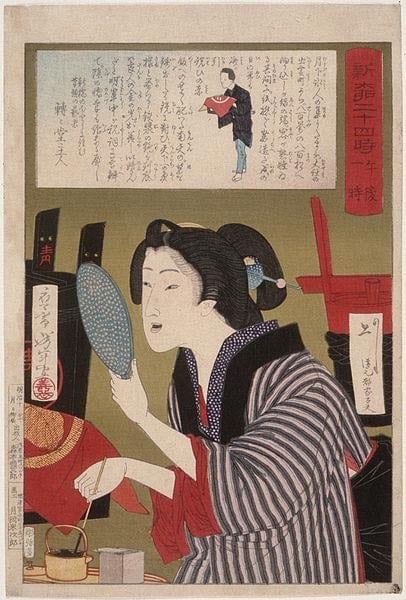
Geisha blackening the teeth to 1 am, ukiyo-e of Tsukioka Yoshitoshi, number 13 of the series 24 hours Shinbashi and Yanagibashi. (Public Domain)
Nothing but Blackened Teeth
Interestingly, there is a yokai (a supernatural spirit / monster in Japanese folklore) called the Ohaguro Bettari (translated as ‘nothing but blackened teeth’). This yokai is believed to look like a beautiful woman (from the back at least) dressed in wedding clothes. She is said to enjoy calling single young men over to her.
While they come towards her, she keeps her face hidden from their view. But when the men come close enough, she reveals a white face that is featureless, except for a huge mouth with a set of black teeth. Apart from scaring the men out of their wits, this yokai seems to be pretty harmless, as no stories attribute her appearance with death or injuries to the frightened men.
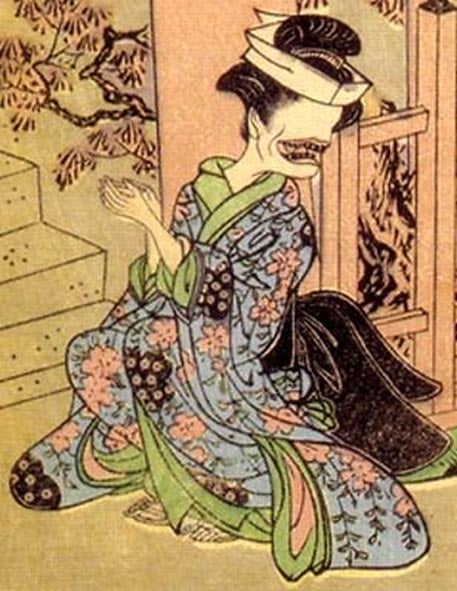
Image of an Ohaguro Bettari. (CC BY SA)
Top Image: An Edo period painting showing a woman with blackened teeth stained by the practice of Ohaguro. Source: Morley Makeup Artistry
By Wu Mingren
Updated on September 30, 2020.
References
Brown, P., 2016. Ohaguro. [Online]
Available at: http://www.peterbrown-palaeoanthropology.net/Ohaguro.html
Conger, C., 2013. Where Blackened Teeth Were Beautiful. [Online]
Available at: http://www.stuffmomnevertoldyou.com/blog/where-blackened-teeth-were-beautiful/
jpninfo.com, 2016. Ohaguro: Why Did the Japanese Dye Their Teeth Black?. [Online]
Available at: http://jpninfo.com/38502
TempeSmiles, 2015. Ohaguro-Teeth Blackening Tradition. [Online]
Available at: http://mytempesmiles.com/ohaguro-teeth-blackening-tradition/
yokai.com, 2013. Ohaguro Bettari. [Online]
Available at: http://yokai.com/ohagurobettari/
















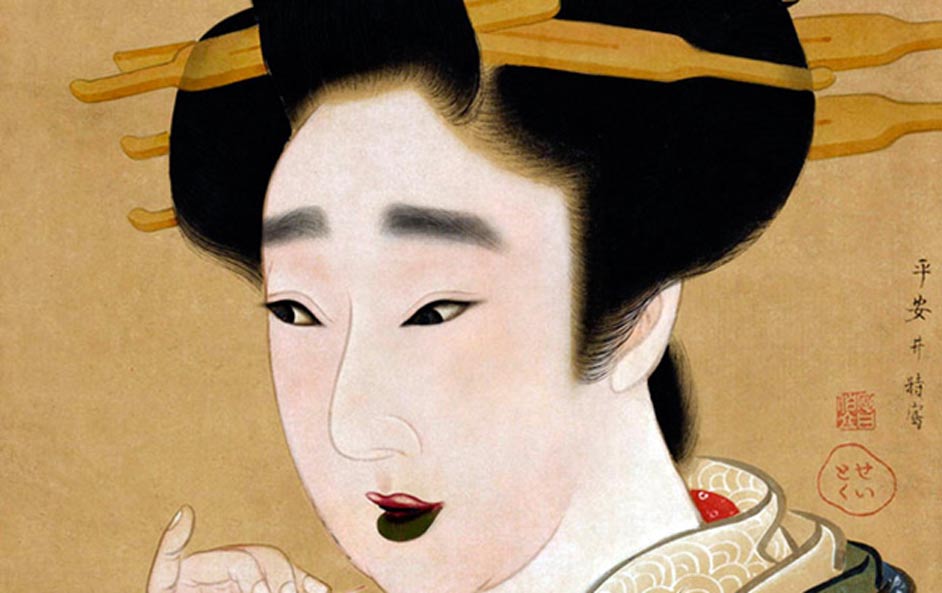

Comments
Mercury treatments for Syphilis would turn the teeth black. Why not make it a fashion? In Europe women filed down the black until their teeth were gone.
It was my understanding that the teeth were blackened because the white teeth were an indication of the white skull and teeth underneath
because some cultures are just freaking wacko...
or all of them are at some point in time. just look at our current tattoo craze. Totally freaking nutz and the sooner this fad dies the better people look freaking ridiculous.
So very interesting! The articles mentioned other countries where black teeth was the fashion – what are these countries?
- Moonsong
--------------------------------------------
A dreamer is one who can only find his way by moonlight, and his punishment is that he sees the dawn before the rest of the world ~ Oscar Wilde
well its a step up from foot binding at least.